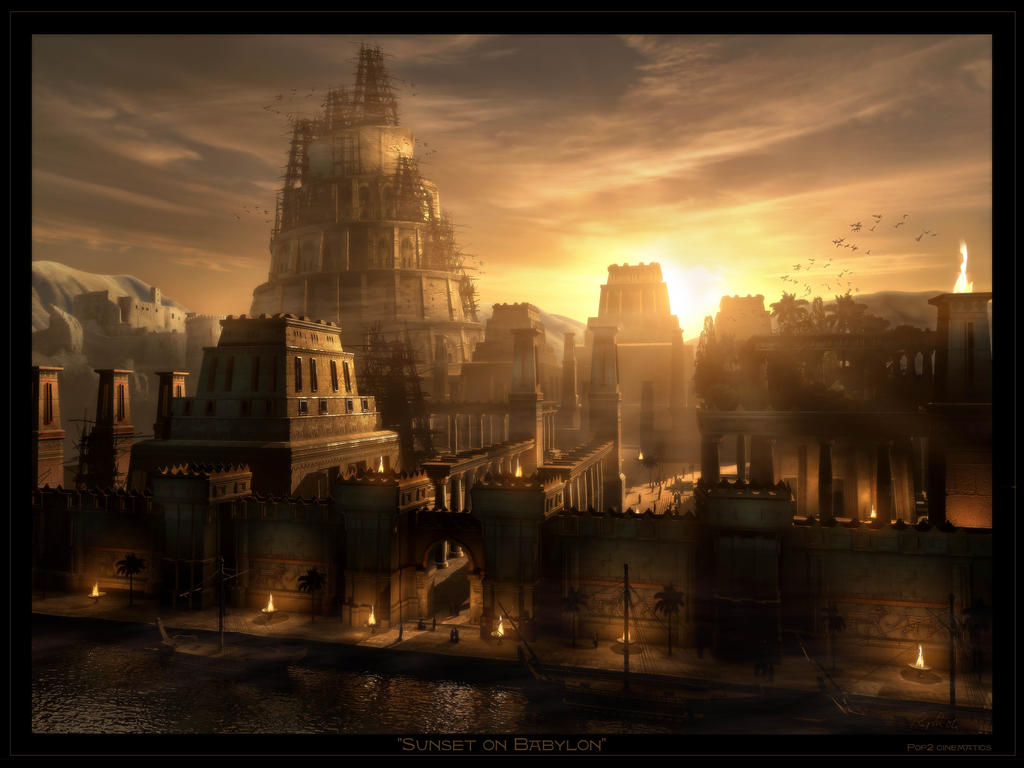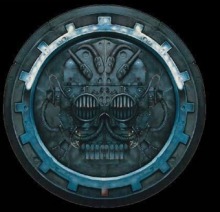Kings of Bronze
OOC | IC | Map
Co-OPs
None yet.
A Pub Sponsored RP
Theme Song
Welcome to 1350 BC, also known as the Age of the Great Kings, in the great cradle of civilization, Mesopotamia. Alongside such great civilizations as the Babylonians, Egyptians, Assyrians, and Hittites, you will leave your own mark on ancient history. Here you will lead a civilization to glory and cement their place in history, or else be swept aside by the great tidal waves of time. In this age of kings, dare to be a god amongst men.
Rules
1: OP has final say. No exceptions.
2: OP reserves the right to deny any application deemed not acceptable.
3: No God-modding or Meta-gaming.
4: No directly controlling another nation unless given permission to do so.
5: Posts must be a paragraph minimum. One-liners are highly discouraged.
6: Try to use correct grammar, and no walls of text that are not broken up into paragraphs.
7: Be courteous to one another in the OOC. Feel free to be as much of a dick in the IC as you desire.
8: Be active should you apply. No need to be online 24/7 (as I certainly will not be) but don’t go through the effort of joining and never post anything. If you will be gone for any significant amount of time please leave a message stating that you will be gone. Those who do not risk having their nations destroyed.
9: You nation cannot be overpowered. Any overpowered nations will bring forth the wrath of the OP in the form of even worse obstacles and outcomes.
10: Have fun.
1: OP has final say. No exceptions.
2: OP reserves the right to deny any application deemed not acceptable.
3: No God-modding or Meta-gaming.
4: No directly controlling another nation unless given permission to do so.
5: Posts must be a paragraph minimum. One-liners are highly discouraged.
6: Try to use correct grammar, and no walls of text that are not broken up into paragraphs.
7: Be courteous to one another in the OOC. Feel free to be as much of a dick in the IC as you desire.
8: Be active should you apply. No need to be online 24/7 (as I certainly will not be) but don’t go through the effort of joining and never post anything. If you will be gone for any significant amount of time please leave a message stating that you will be gone. Those who do not risk having their nations destroyed.
9: You nation cannot be overpowered. Any overpowered nations will bring forth the wrath of the OP in the form of even worse obstacles and outcomes.
10: Have fun.
Military can not be more than 10% of your total population.
Keep in mind the seasons when your army is levied, and keep in mind the time it takes to raise and march an army places.
Roads are very rare and spread out, so keep in mind your army will have to march over mostly rough and wild terrain.
Domesticated horses to facilitate cavalry have not been discovered yet, so the only mounted soldiers possible are those riding chariots pulled by horses.
Metal armor is very expensive and ergo very rare, so limit it to your more elite troops, giving your other troops padded cloth, leather, or wicker armor or shields.
Keep in mind the seasons when your army is levied, and keep in mind the time it takes to raise and march an army places.
Roads are very rare and spread out, so keep in mind your army will have to march over mostly rough and wild terrain.
Domesticated horses to facilitate cavalry have not been discovered yet, so the only mounted soldiers possible are those riding chariots pulled by horses.
Metal armor is very expensive and ergo very rare, so limit it to your more elite troops, giving your other troops padded cloth, leather, or wicker armor or shields.
Remove all in parentheses, else your app will be skipped.
- Code: Select all
[size=120][u]=Basic Information=[/u][/size]
[b]NS Name:[/b]
[b]Civilization Name:[/b]
[b]Government Type:[/b]
[b]Capital:[/b]
[b]Population (No more than 450,000):[/b]
[b]Claim (Map image preferred):[/b]
[size=120][u]=Military Information=[/u][/size]
[b]Description of Military:[/b]
[b]Eligible Manpower (No more than 10% of total population):[/b]
[size=120][u]=Historical Information=[/u][/size]
[b]Brief History of Civilization (Must be at least 2 paragraphs):[/b]
[b]Brief Description of Culture (Must be at least 1 decent paragraph):[/b]
[size=120][u]=Miscellaneous=[/u][/size]
[b]RP Examples (2 required, otherwise your history will be used):[/b]
DO NOT REMOVE: [color=red][size=60]4327[/size][/color]
=Basic Information=
NS Name: Sarejo
Civilization Name: Empire of Lanid (Lanidian, Lanidians)
Government Type: Absolute Hereditary Monarchy
Capital: Kusamar
Population: 390,000
Claim: Here.
=Military Information=
Description of Military:
Eligible Manpower: 29,000; 9,000 standing army (3,000 heavy infantry, 2,000 chariots, 4,000 medium shock infantry); Average army size is 24,000 (9,000 core army, 8,000 medium infantry, 7,000 skirmishers)
=Historical Information=
Brief History of Civilization: The people of Lanid first took power when the city-state of Lanid conquered the surrounding city-states of Hebe, Qisme, and Kusamar from 1524 BC to 1519 BC, nearly two centuries ago. Eradesh Durak I crowned himself emperor, and set about consolidating his power, creating the Lanidian Codex, a set of laws governing crime within the empire, and created the Akmish, a state-sponsored policing and peace force to enforce the codex.
When the Durak Dynasty was ended in 1410 BC after weakening power stemming from a complacency amongst the nobility, a young general named Rikshi Shrih took power, executed the other claimants, and moved the capital to its current location in Kusamar. He disbanded the Akmish due to its rampant corruption, and instituted a state of martial law. He also ordered construction of the Mycre, a large theater and garden complex located on the site of the old imperial palace. Riskhi refined the Lanidian Codex, adding the Kusamar Addendum, which defined treasonous acts and established a more rigid line of succession, based on the seniority of birth and through the father's line, as opposed to the previous method of a war of succession to determine the ruler following the preceding one's death as had been commonplace before. The Shrih Dynasty continues to rule Lanid from Kusamar, and the current ruler, Tekal Shrih II, has set his sights on expanding the borders of the empire to gain new mines for copper and gold.
Brief Description of Culture: Lanidian culture is based heavily around a rigid caste system, with slaves on the bottom, followed by freemen, merchants and artists, soldiers, clergy, and finally nobles, each defined by their wealth and position in society. Lanidians are also famous for their poetry and art, however do not mistake them for soft pacifists. Lanidian troops are highly disciplined and fierce, and a Lanidian War Cry has been known to shatter armies before any combat has taken place, and Lanidian chariots are a force to be feared. Lanidian religion is primarily based around the worship of four main deities: Ireus, the God of Fire and War; Aysus, the God of the Hunt; Soana, the Goddess of the Harvest; and Aagi, the God of the Sky.
=Miscellaneous=
RP Examples:
DO NOT REMOVE: 4327
NS Name: Sarejo
Civilization Name: Empire of Lanid (Lanidian, Lanidians)
Government Type: Absolute Hereditary Monarchy
Capital: Kusamar
Population: 390,000
Claim: Here.
=Military Information=
Description of Military:
Lanidian Levy (Skirmishers)
Cloth tunic
Leather sandals
Leather sling
~30 stones, can vary
Lanidian Bowmen (Skirmishers)
Cloth robe
Leather sandals
Bronze dagger
Short bow
Leather quiver with 50 arrows
Lanidian Spearmen (Medium Infantry)
Wooden helmet
Wicker armor
Cloth tunic
Leather sandals
Bronze-tipped spear
Bronze sword (Occasionally)
Wooden shield covered with leather
Lanidian Axeband (Medium Shock Infantry)
Leather armor
Cloth tunic and skirt
Leather sandals
Bronze axe
Wooden shield covered with leather
Lanidian Chariot Rider (Medium Skirmishing Chariot)
(Driver)
Bronze helmet
Wicker armor
Cloth tunic
Leather sandals
Bronze sword
(Archer)
Bronze helmet
Wicker armor
Cloth tunic
Leather sandals
Short bow
Leather quiver with 50 arrows
Emperor's Guard (Heavy Infantry)
Bronze helmet
Bronze scale armor
Cloth tunic
Leather sandals
Bronze sword
Bronze-tipped spear
Wooden shield reinforced with bronze
Eligible Manpower: 29,000; 9,000 standing army (3,000 heavy infantry, 2,000 chariots, 4,000 medium shock infantry); Average army size is 24,000 (9,000 core army, 8,000 medium infantry, 7,000 skirmishers)
=Historical Information=
Brief History of Civilization: The people of Lanid first took power when the city-state of Lanid conquered the surrounding city-states of Hebe, Qisme, and Kusamar from 1524 BC to 1519 BC, nearly two centuries ago. Eradesh Durak I crowned himself emperor, and set about consolidating his power, creating the Lanidian Codex, a set of laws governing crime within the empire, and created the Akmish, a state-sponsored policing and peace force to enforce the codex.
When the Durak Dynasty was ended in 1410 BC after weakening power stemming from a complacency amongst the nobility, a young general named Rikshi Shrih took power, executed the other claimants, and moved the capital to its current location in Kusamar. He disbanded the Akmish due to its rampant corruption, and instituted a state of martial law. He also ordered construction of the Mycre, a large theater and garden complex located on the site of the old imperial palace. Riskhi refined the Lanidian Codex, adding the Kusamar Addendum, which defined treasonous acts and established a more rigid line of succession, based on the seniority of birth and through the father's line, as opposed to the previous method of a war of succession to determine the ruler following the preceding one's death as had been commonplace before. The Shrih Dynasty continues to rule Lanid from Kusamar, and the current ruler, Tekal Shrih II, has set his sights on expanding the borders of the empire to gain new mines for copper and gold.
Brief Description of Culture: Lanidian culture is based heavily around a rigid caste system, with slaves on the bottom, followed by freemen, merchants and artists, soldiers, clergy, and finally nobles, each defined by their wealth and position in society. Lanidians are also famous for their poetry and art, however do not mistake them for soft pacifists. Lanidian troops are highly disciplined and fierce, and a Lanidian War Cry has been known to shatter armies before any combat has taken place, and Lanidian chariots are a force to be feared. Lanidian religion is primarily based around the worship of four main deities: Ireus, the God of Fire and War; Aysus, the God of the Hunt; Soana, the Goddess of the Harvest; and Aagi, the God of the Sky.
=Miscellaneous=
RP Examples:
DO NOT REMOVE: 4327








